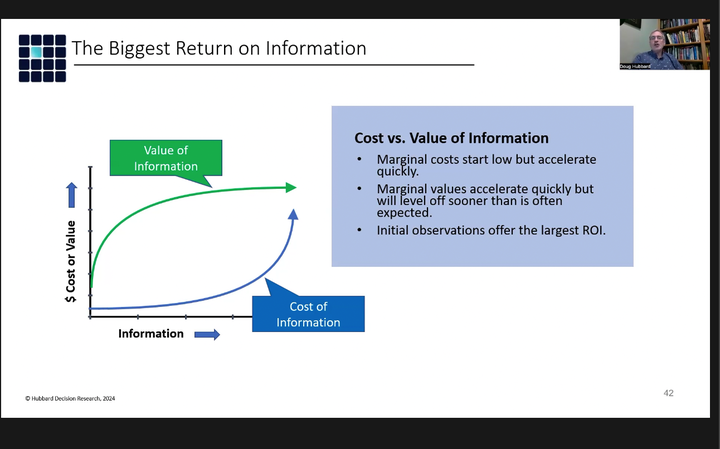
On July 9th, 2024, the Institute for Crop Science and Resource Conservation (INRES) Horticultural Sciences welcomed Douglas W. Hubbard, a renowned management consultant, speaker, and author of decision sciences and actuarial science. Hubbard has written several influential publications encouraging people to alter their thinking about measurements, the value of information, and risk to reduce uncertainty in decision-making. His well-known book, How to measure anything, is widely used as a reference in holistic decision analysis and provides practical methods for measuring various intangibles such as customer satisfaction, organizational flexibility, and technology return on investment. The book is also used as course material for the “Decision Analysis and Forecasting in Agriculture” taught by Prof. Dr. Eike Luedeling, Dr. Cory Whitney, and the team at HortiBonn. Following an introduction by Prof. Luedeling, Hubbard began his presentation to an audience of over 80 people, both online and in person. The key message of his talk is that you often have more data than you realize and need less data than you think, although the type of data you need might differ from your initial assumptions. He described Applied Information Economics AIE as a practical decision-making approach based entirely on methods that have shown measurable improvement in estimates and decisions. Hubbard summarized AIE in five steps:
- Model uncertainty in complex decisions: Define decisions and quantify uncertainty using probabilistic methods and Monte Carlo simulations.
- Measure any intangible: As described in “How to Measure Anything,” things that appear immeasurable are often just not well defined.
- If it matters, monetize it: Quantify the values, even for issues that might seem to defy it, such as the environment, health and safety, childhood education, and drought resilience.
- Compute the value of information: The “Measurement Inversion” occurs when measurements are not prioritized according to the expected benefits of a decision.
- Inform decisions with understandable results: Condense even complex analysis into clear outcomes with practical consequences for executive decision-makers The presentation was followed by an interesting discussion about its practical relevance concerning current graduate projects.